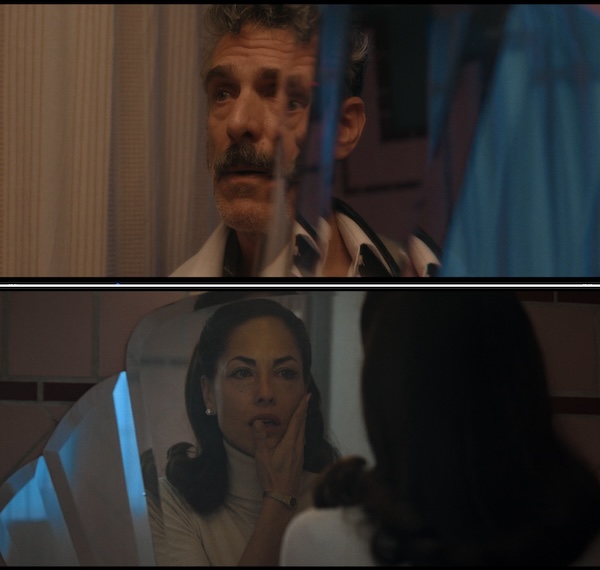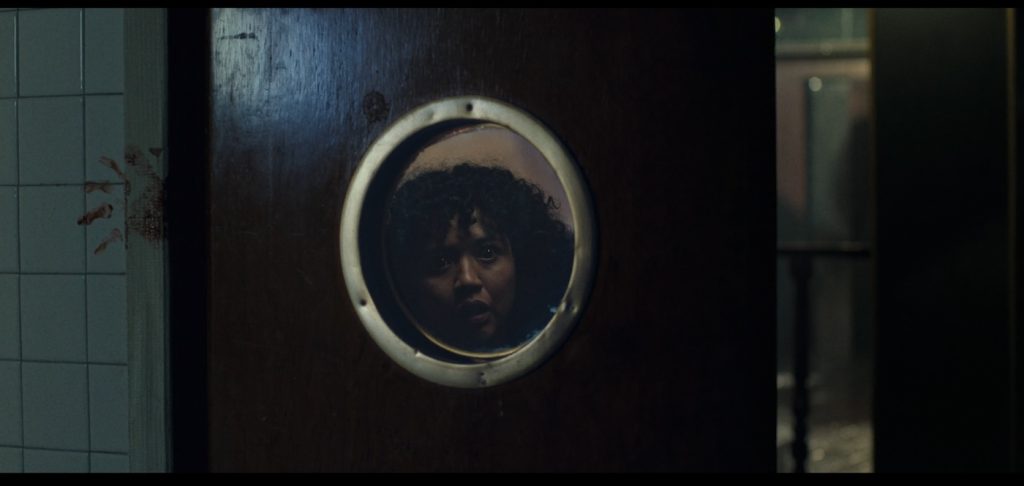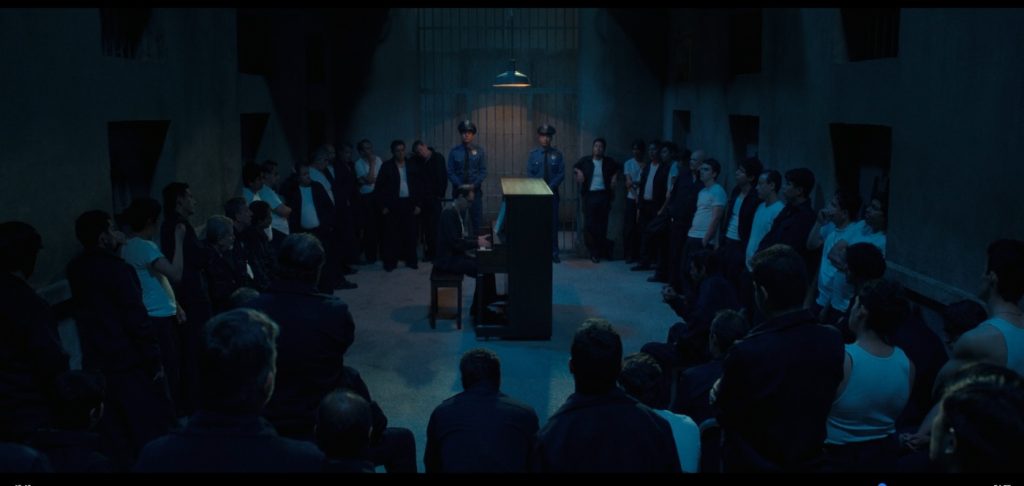“Women in Blue” Cinematographer Sarasvati Herrera on Lensing Apple TV+’s Gripping New Thriller
The Apple TV+ series Women in Blue (Las Azules) is torn from the history books of Mexico during a time when the first female police officers joined the ranks. Created by Pablo Aramendi and Fernando Rovzar, the ten-episode crime thriller follows four women – María (Bárbara Mori), Gabina (Amorita Rasgado), Ángeles (Ximena Sariñana), and Valentina (Natalia Téllez) – on a psychological whodunit as they to catch a serial killer terrorizing the neighborhood.
Cinematographers Alejandro Martínez, Daniel Jacobs, and Sarasvati Herrera captured the visually painterly series. The latter lensed the series’ emotional turning point in episodes 5 and 6. Herrera shares with The Credits how she recognized the gravity of the project’s historical significance.
“As a female artist, I thought this story was absolutely necessary to talk about. Especially in Mexico, where it’s still very hard for a woman to get a job that a man generally does, like working in the police department,” she says. “These women were real, and they did a lot for the community. They couldn’t believe we were representing them.” Being the sole female cinematographer had its own merit as well. “For me, everything that puts women up front is wonderful because when I grew up, you couldn’t even do what I am doing now. Now, to be on a show where the lead characters are women and to have women in the creative departments, I am very honored to be part of this series.”
In expanding the visual story, Herrera used a LUT with low and mid-lights, three stops down in exposure. This altered the texture of skin tones and required the cinematographer to approach lighting differently while embracing darker, moodier tones. Working in low light, a Sony VENICE II was paired with Cooke S4 uncoated lenses for their slightly “vintage look” and Angenieux Zooms for speed and practicality. While collaborating with director Carlos Moreno, Herrera says it was all about the “camera language.” In prep, they referenced films like David Fincher’s Seven (1995) and Steven Spielberg’s Munich (2005) and discussed how zoom and dolly language would shape compositions. Another ingredient was how the camera followed the characters or how it moved closer to the subject to heighten emotional touchstones in a character’s performance intentionally.
Below, Herrera talks about the making of the most stirring images in her two episodes.
Mirror, Mirror on the Wall

Maria (Mori) ‘s relationship with her husband Miguel (Jerónimo Best) is tumultuous at best, as he’s having a not-so-secret affair. Connecting the duality of their life at home is a pair of mirror shots: one showing Miguel breaking down and another showing Maria being lifted by the potential of her newfound love of police work.
Herrera: Miguel’s mirror shot came out when Carlos and I were blocking the scene, as it was the first time we saw that bathroom location. We talked about reflections and how you see yourself when you’re lying. So when we got to this bathroom, it was perfect. With Maria, we have this simplicity in the lighting with a little bit of diffusion on her forehead that wraps underneath. It was lit with an Astera tube LED above the mirror and an Arri Skypanel S360-C outside the window. The simplicity was nice in that very small space.

Curiosity Killed the Cat
As the women collect clues, Gabina (Amorita Rasgado) follows a police officer into an abandoned hotel. As she peers through a door window, she’s shocked to see an officer beating someone. A bloody handprint hints at terror inside the room.
Herrera: That was a great location. We had that disco ball behind, and I love that we had that in there. Gabina didn’t have any light on her face because she’s very tight with the door, so I put a tube light in the corner of the door just to have her eyes lit.
The scene touts the most disturbing violence of the series, a decision made with purpose.
Herrera: Showrunner Fernando Rovzar made it clear from the beginning that he didn’t want to see the victims of the serial killer because your imagination already does that. But with the police, we wanted the violence to be much clearer and direct, so you almost compare them in a way. Like how close does this police officer become a serial killer himself?
A Symphony of Clues

As the women get closer to finding the suspect, Maria visits a prison to interview an inmate for potential clues. What unravels is an intellectual standoff akin to Clarice’s visit with Hannibal Lecter in Silence of the Lambs. But for Maria, the inmate won’t play nice until the piano that’s been taken away is replaced. By the end of episode six, she grants his wish, and in a melancholy moment, a group of guards and prisoners circle around him as he plays Beethoven’s “Moonlight Sonata.” The room blooms with a bluish-cool hue as a montage of crippling events juxtaposes the music.
Herrera: That scene was one of my favorites to shoot. The actor was really playing the song, and all the men and extras around him really got into it. We did all the close-ups from the extras, and then we played with the actor for the final shots, which had tighter close-ups of him. We did the song about 30 times, so the atmosphere became pretty melancholic. Lighting it we hung an Arri SkyPanel S360-C with a crane on the top of the building with diffusion. Then we had another Sky Panel on the other side and a 100-watt tungsten bulb just above the piano.
Women in Blue (Las Azules) is streaming now on Apple TV+.
For more stories on Apple TV+ series and films, check these out:
“Manhunt”: A Visual Journey Through Time with Graphic Designer Gina Alessi
Apple Original Films Planning Sequel to Brad Pitt & George Clooney Film “Wolfs”
“Disclaimer” Teaser Reveals Alfonso Cuarón’s Star-Studded Limited Series
Featured image: Bárbara Mori, Amorita Rasgado and Natalia Téllez in “Women in Blue (Las Azules),” now streaming on Apple TV+.



